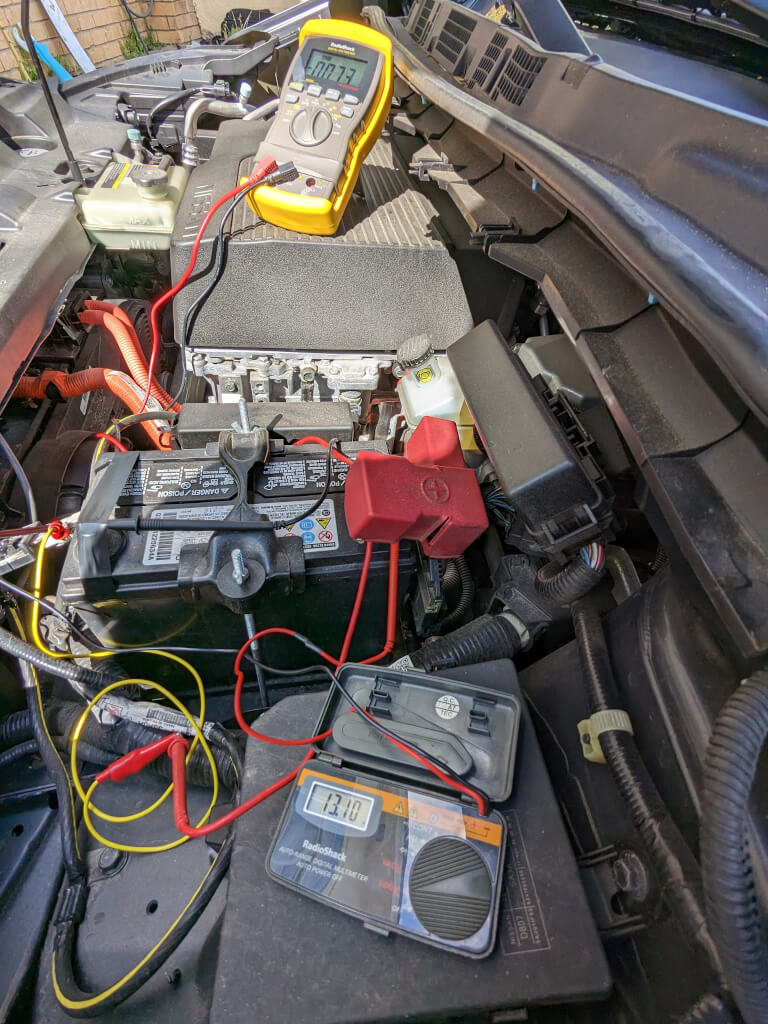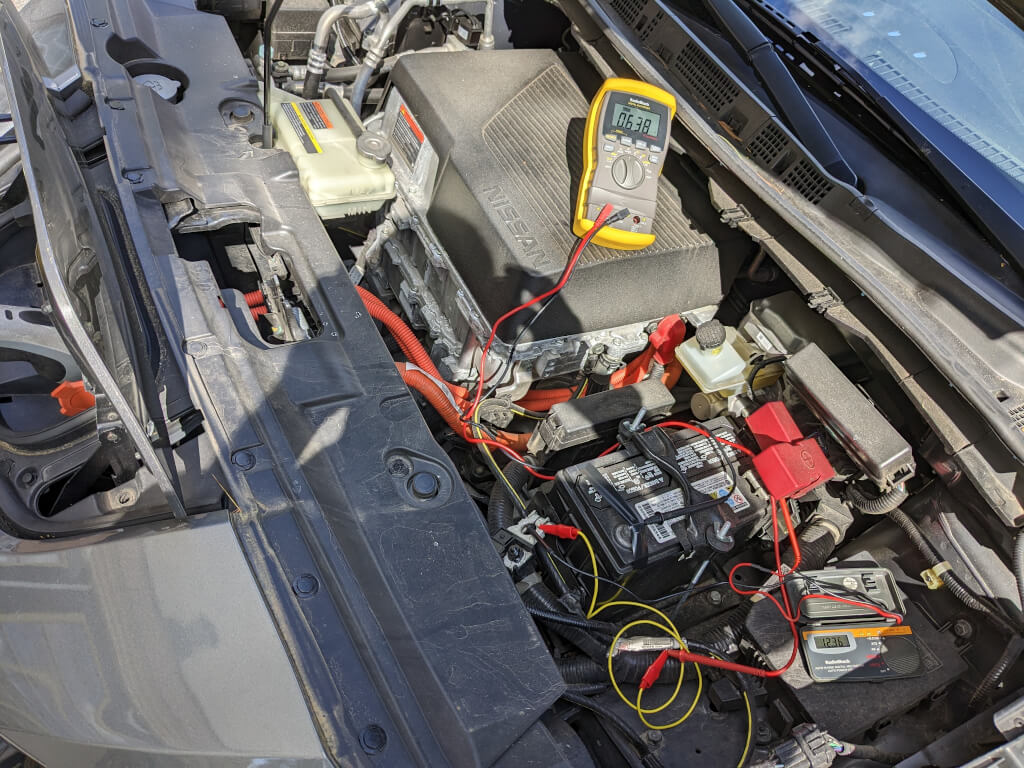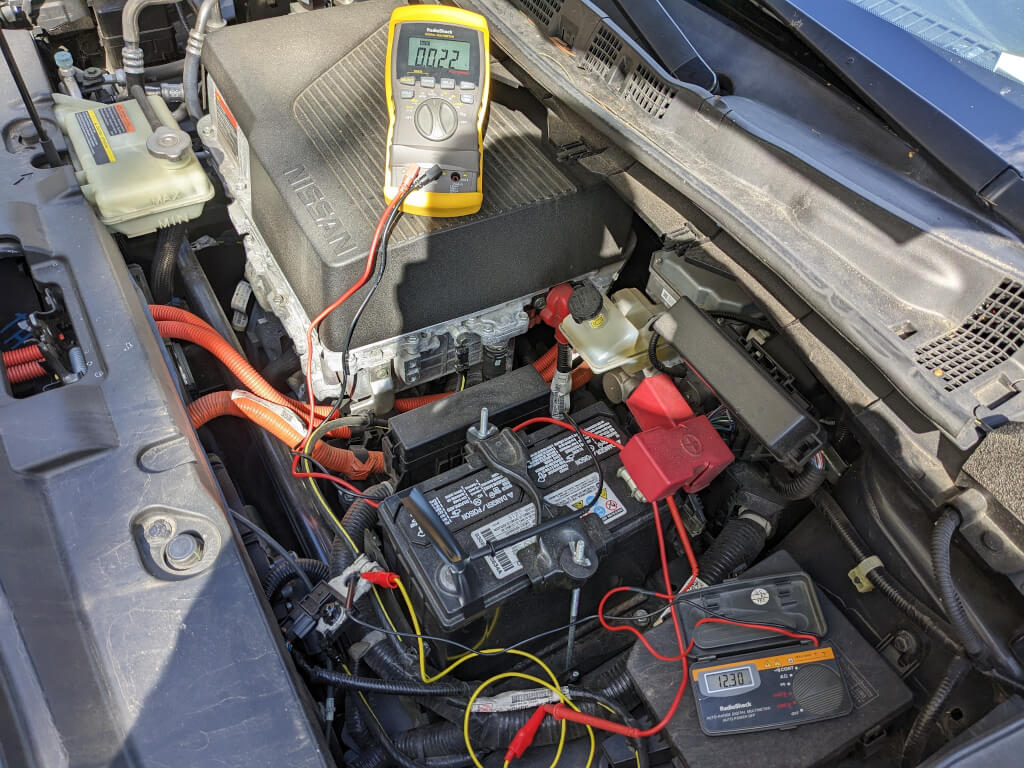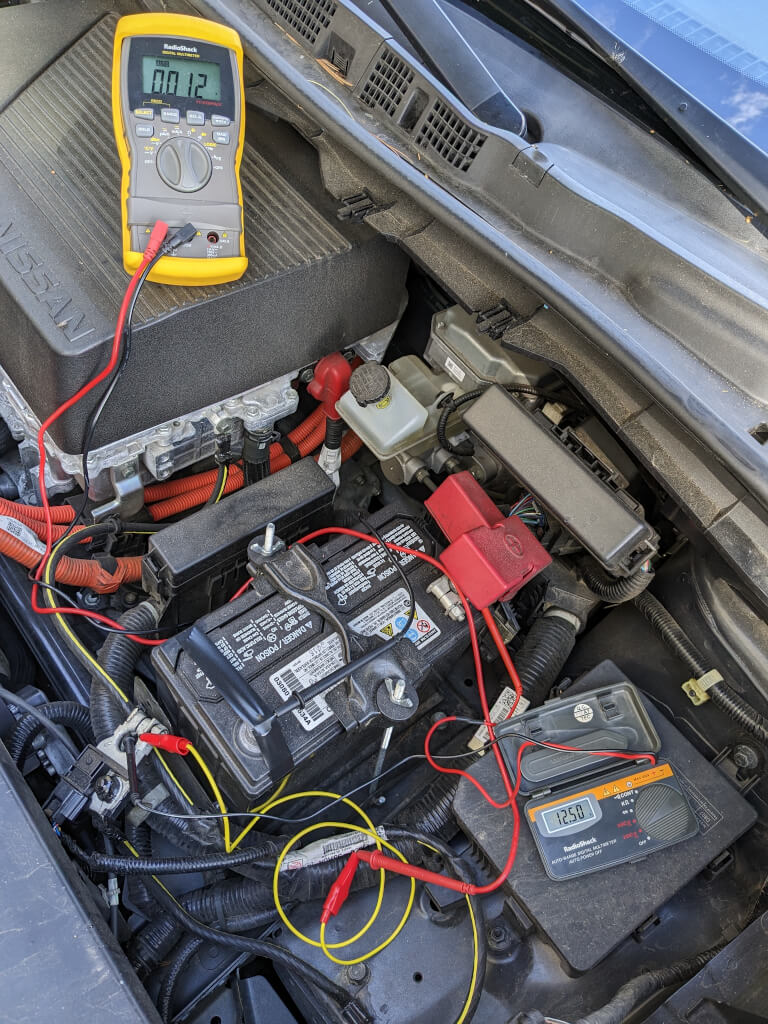knightmb
Well-known member
This comes up from time to time, but the short version is when your Leaf is fully charged and still plugged in (L1,L2,ChaDeMo) the 12 Volt battery will experience a "drain" until you unplug your Leaf. While the Leaf is still plugged in, it can't do any "maintenance" charging for the 12 Volt battery to top off the capacity.
I setup an experiment to measure this "vampire" drain and hopefully this information can benefit others in selecting a 12V battery to meet your needs should you need a replacement in the future.
I currently have access to a 2015, 2018, and 2020 Leaf to experiment with. Today, I chose my wife's 2018 :lol: to do this.
To make it more complete, I even put in her original "lead acid" battery for this experiment. I've been keeping it on a maintainer so it goes into her Leaf fully charged already. I charged her Leaf all the way to 100% via our home L2 and then wired it up so I could measure voltage and current while doing another "charge" after the first one was already complete. I expected it to balance the cells for +15 minutes, so I didn't have to wait a long time to begin recording measurements.
Here are the results of this experiment, in summary form.
While charging on the L2, the Leaf is still feeding about (0.073 A x 13.1 V = ) 0.9563 watts into the battery, basically a full 12V battery.
When the Leaf stops charging, DC relays disconnect, all solid blue lights on Dash, the battery begins feeding about (0.638 A x 12.36 V = ) 7.88568 watts back into the Leaf.
After a few minutes, the Leaf goes to sleep and the power drain drops to (0.022 A x 12.3 V = ) 0.2706 watts drain on the battery. I set a timer for 30 minutes and came back a half hour later and the drain was still the same.
Finally after an hour, I disconnected the L2 from the Leaf and noticed a slight drop in power drain. (0.012 A x 12.5 V = ) 0.15 watts
Conclusion: The Leaf uses nearly "twice" as much power while still plugged in versus not. Although this is "twice" as much power, looking at the actual power numbers, a 12V battery would have to be fairly weak to experience a fast death from such a small power load.
This is how much power was going into the 12V battery while it was "charging"

Once charging stopped, you can see power is now being drained from the 12V battery at first.

After a few minutes, the Leaf goes to sleep and the drain becomes much smaller.

After unplugging the L2 from the Leaf, the drain drops a little more.

I setup an experiment to measure this "vampire" drain and hopefully this information can benefit others in selecting a 12V battery to meet your needs should you need a replacement in the future.
I currently have access to a 2015, 2018, and 2020 Leaf to experiment with. Today, I chose my wife's 2018 :lol: to do this.
To make it more complete, I even put in her original "lead acid" battery for this experiment. I've been keeping it on a maintainer so it goes into her Leaf fully charged already. I charged her Leaf all the way to 100% via our home L2 and then wired it up so I could measure voltage and current while doing another "charge" after the first one was already complete. I expected it to balance the cells for +15 minutes, so I didn't have to wait a long time to begin recording measurements.
Here are the results of this experiment, in summary form.
While charging on the L2, the Leaf is still feeding about (0.073 A x 13.1 V = ) 0.9563 watts into the battery, basically a full 12V battery.
When the Leaf stops charging, DC relays disconnect, all solid blue lights on Dash, the battery begins feeding about (0.638 A x 12.36 V = ) 7.88568 watts back into the Leaf.
After a few minutes, the Leaf goes to sleep and the power drain drops to (0.022 A x 12.3 V = ) 0.2706 watts drain on the battery. I set a timer for 30 minutes and came back a half hour later and the drain was still the same.
Finally after an hour, I disconnected the L2 from the Leaf and noticed a slight drop in power drain. (0.012 A x 12.5 V = ) 0.15 watts
Conclusion: The Leaf uses nearly "twice" as much power while still plugged in versus not. Although this is "twice" as much power, looking at the actual power numbers, a 12V battery would have to be fairly weak to experience a fast death from such a small power load.
This is how much power was going into the 12V battery while it was "charging"

Once charging stopped, you can see power is now being drained from the 12V battery at first.

After a few minutes, the Leaf goes to sleep and the drain becomes much smaller.

After unplugging the L2 from the Leaf, the drain drops a little more.

